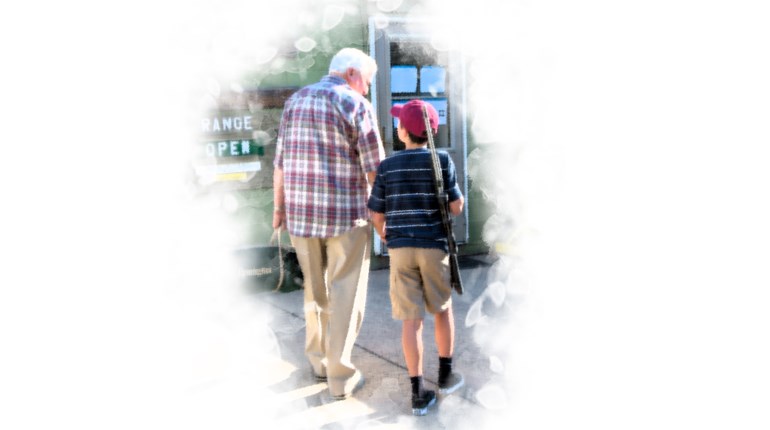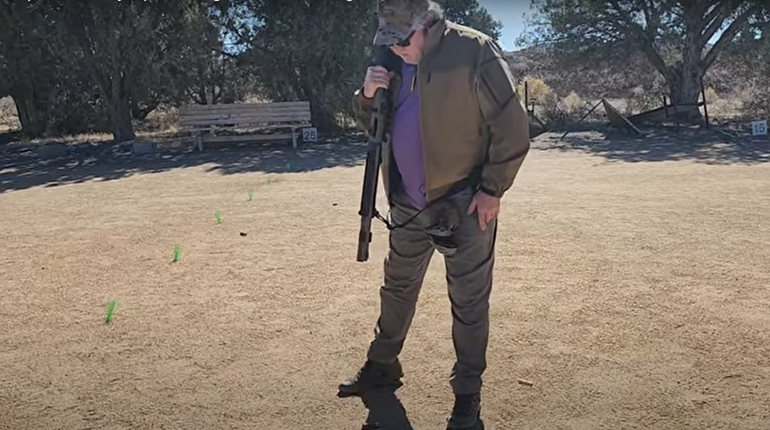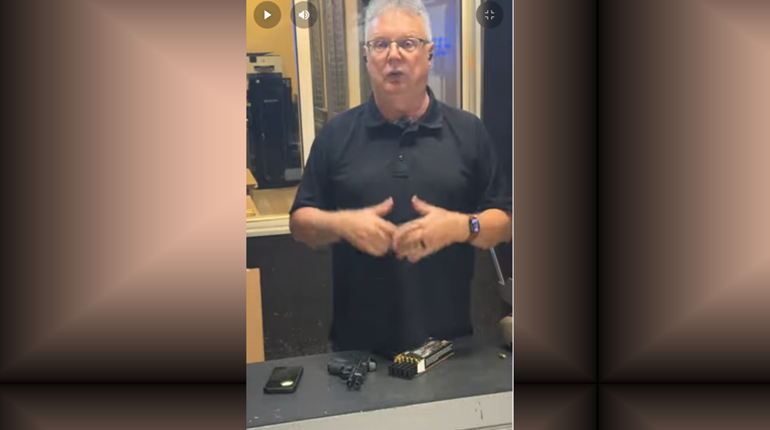** When you buy products through the links on our site, we may earn a commission that supports NRA's mission to protect, preserve and defend the Second Amendment. **

A gun's bore is defined as "the interior of a barrel forward of the chamber." Any object in the bore that impedes the progress of the bullet toward the muzzle has the potential of raising pressures to a hazardous level. There are many types of objects that can serve as bore obstructions: cleaning patches, snow, mud, dirt or other material that may be collected from the environment; even bullets from a squib load or portions of a bullet jacket. The results of a bore obstruction vary, depending upon the thickness of the barrel walls, strength and type of action, the pressure of the cartridge, the weight of the obstruction and where the obstruction is located.
An obstruction in or just forward of the chamber has the effect of augmenting the weight of the bullet or shot charge, and therefore increases chamber pressure. The potential for damage to the firearm depends upon the amount of this pressure increase, the construction of the action and breech, and the strength of the case. If the increase in pressure is only moderate, little or no damage may result.
An obstruction in the middle or forward part of the barrel may cause a ring bulge or, in some cases, bursting of the barrel at that point. This damage results from the impact of the projectile(s) with the obstruction. The weight of the obstruction , speed of the bullet or shot charge, and thickness of the barrel wall determines the extent of the damage. Cases have been seen in which a separated bullet jacket in the bore caused a small ring bulge and was ironed into the bore at that point, allowing the passage of subsequent bullets without other signs noticeable by the shooter.
Occasionally, a burst shotgun barrel is produced when a too-small shell is inadvertently dropped into a shotgun chamber and becomes lodged in the bore, and is impacted by the shot charge or slug of a subsequent shell. This can happen with a 20-gauge shell mistakenly inserted into a 12-gauge chamber: The undersized shell is lodged forward of the chamber and the shooter, seeing an empty chamber, loads a 12-gauge shell into that barrel and fires it. In this scenario, the 20-gauge shell not only acts as a bore obstruction, but itself often fires when hit by the 12-gauge load.
Barrel damage from defects in the structure or material of the steel (such as the bursting of a Damascus barrel fired with high-pressure smokeless powder loads) presents a different appearance than damage resulting from an obstruction. Also, while a heavy obstruction in the chamber end of the barrel may indeed damage an action, those in the middle or forward part of the barrel (such as occur when mud or snow get in the muzzle) may damage only the barrel and not the action.
Fortunately, it is fairly easy to avoid the hazards of bore obstructions. After cleaning the bore, visually inspect it from the breech end for patches or other objects. In the field, keep the gun's muzzle away from snow, water and mud. At all times, if a squib load is suspected, unload the firearm, open the action and ensure the bore is clear, either by visual inspection (from the breech end!) or by running a cleaning rod the length of the bore.
An obstruction in or just forward of the chamber has the effect of augmenting the weight of the bullet or shot charge, and therefore increases chamber pressure. The potential for damage to the firearm depends upon the amount of this pressure increase, the construction of the action and breech, and the strength of the case. If the increase in pressure is only moderate, little or no damage may result.
An obstruction in the middle or forward part of the barrel may cause a ring bulge or, in some cases, bursting of the barrel at that point. This damage results from the impact of the projectile(s) with the obstruction. The weight of the obstruction , speed of the bullet or shot charge, and thickness of the barrel wall determines the extent of the damage. Cases have been seen in which a separated bullet jacket in the bore caused a small ring bulge and was ironed into the bore at that point, allowing the passage of subsequent bullets without other signs noticeable by the shooter.
Occasionally, a burst shotgun barrel is produced when a too-small shell is inadvertently dropped into a shotgun chamber and becomes lodged in the bore, and is impacted by the shot charge or slug of a subsequent shell. This can happen with a 20-gauge shell mistakenly inserted into a 12-gauge chamber: The undersized shell is lodged forward of the chamber and the shooter, seeing an empty chamber, loads a 12-gauge shell into that barrel and fires it. In this scenario, the 20-gauge shell not only acts as a bore obstruction, but itself often fires when hit by the 12-gauge load.
Barrel damage from defects in the structure or material of the steel (such as the bursting of a Damascus barrel fired with high-pressure smokeless powder loads) presents a different appearance than damage resulting from an obstruction. Also, while a heavy obstruction in the chamber end of the barrel may indeed damage an action, those in the middle or forward part of the barrel (such as occur when mud or snow get in the muzzle) may damage only the barrel and not the action.
Fortunately, it is fairly easy to avoid the hazards of bore obstructions. After cleaning the bore, visually inspect it from the breech end for patches or other objects. In the field, keep the gun's muzzle away from snow, water and mud. At all times, if a squib load is suspected, unload the firearm, open the action and ensure the bore is clear, either by visual inspection (from the breech end!) or by running a cleaning rod the length of the bore.







































